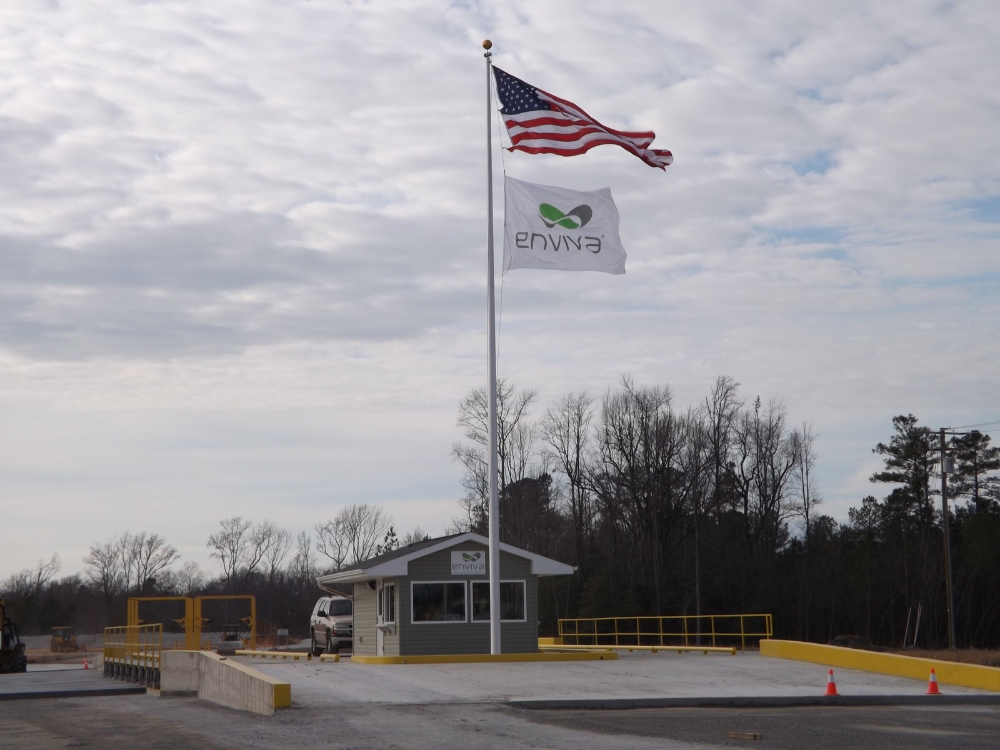Enviva Partners, the world leading wood pellet producer, has increased net revenue by 19.3% to $684.4 million in 2019. Wood pellet sales volume has risen by 19.5% to 3,564 thousand tonnes. Adjusted gross margin per metric ton was $42.54 for 2019, as compared to $38.81 for 2018. Adjusted gross margin increased primarily due to higher sales volumes, higher pricing due to customer contract mix, and lower production and fiber procurement costs, company said.
“The ramp-up of the Hamlet plant and the completion of the Mid-Atlantic Expansions, along with organic growth that includes headline price increases in our long-term off-take contracts and productivity and cost improvements, are expected to significantly increase the cash flow profile of the Partnership for 2020,” said Shai Even, Chief Financial Officer of Enviva.
According to Enviva, the Hamlet plant continues to ramp up production, and the partnership expects the plant to reach its full nameplate production capacity of approximately 600 thousand tonnes per year by the end of 2020.
The projects to increase the aggregate production capacity of the wood pellet production plants in Northampton, North Carolina and Southampton, Virginia by approximately 400 thousand tonnes per year are progressing. The partnership expects to commence the expanded production ramp for the Northampton plant and the Southampton plant in the second and third quarters of 2020, respectively.
Global efforts continue to push for firm commitments to phase out coal, limit the impact of climate change, and cut greenhouse gas emissions to achieve “net-zero” by 2050, said company in its report. In December 2019, the European Commission announced the European Green Deal that aims to decarbonize all parts of the European Union’s economy and transform the EU into the first climate-neutral continent by 2050. The European Green Deal proposes to reduce GHG emissions by at least 50 to 55 percent by 2030 (compared to 1990 levels), which is in line with the level leading climate scientists believe is required to limit global warming to 1.5 °C. The European Commission expects to formally propose a new European Climate Law in March 2020 to enshrine the 2050 climate neutral target into legislation.
In December 2019, the Upper House of the Dutch Parliament passed the law to implement the government’s previously announced goal to phase out the use of coal for power generation by 2030 following the law’s passage by the Lower House in July 2019. This development could provide further impetus for the use of biomass to replace coal in the Netherlands beyond the period of existing co-firing incentives. In addition, the Dutch government has committed to a new incentive program for renewable energy, the Stimulation of Sustainable Energy Transition, or SDE++, and has confirmed that biomass-based heat technologies are eligible to participate.
The German government continues to progress the implementation of the Commission on Growth, Structural Economic Change and Employment’s recommendations. The laws regarding the gradual coal phase-out and the shut-down of coal-fired power generation assets are currently being discussed within Germany’s Federal Government. Meanwhile, many German cities and communities, including Berlin, Frankfurt, Hamburg, and Munich, have set regional coal phase-out target dates ranging from 2022 to 2030, well ahead of the national target of 2038.
In the United Kingdom, the Conservative Party won a decisive victory in the December 2019 election and committed to continue to pursue net-zero carbon emissions across the UK’s economy by 2050 and to fund the development of carbon capture and storage (“CCS”) projects. These policies could support additional large-scale industrial biomass usage, particularly biomass used in conjunction with CCS.
